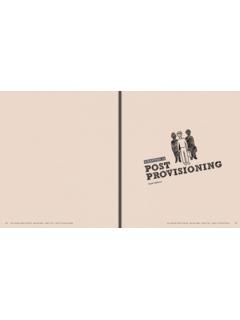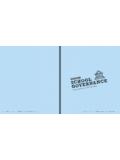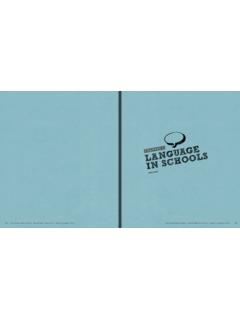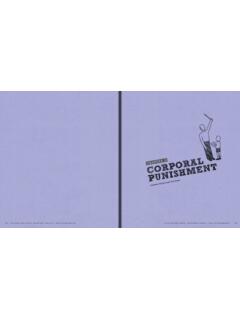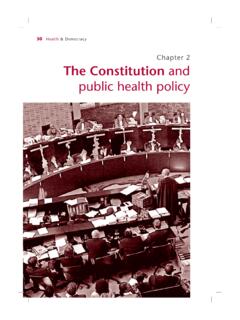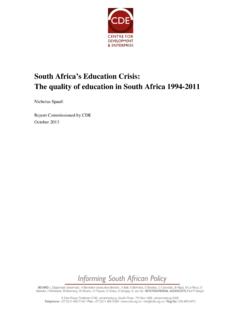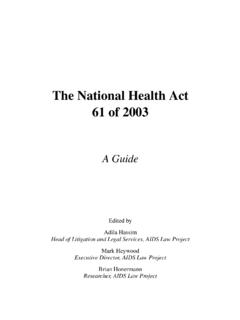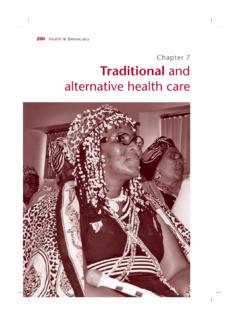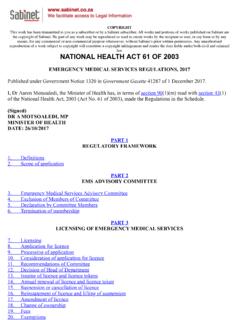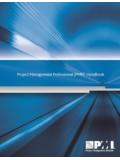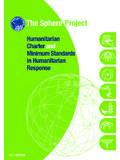Transcription of Basic Education Rights Handbook – Education Rights in ...
1 CHAPTER 5 THE RIGHT TO Basic Education FOR CHILDREN WITH DISABILITIESS ilomo Khumalo and Tim Fish HodgsonBasic Education Rights Handbook Education Rights in South Africa Chapter 5: The Right to Basic Education for Learners with DisabilitiesBasic Education Rights Handbook Education Rights in South Africa Chapter 5: The Right to Basic Education for Learners with Disabilities105104 KEY TERMS: WHAT IS DISABILITY?Correct and accurate terminology is particularly important to disability Rights activism. Incorrect terminology can be alienating for, and hurtful to, people with disabilities. Though people with disabilities do vary in their opinions, in the South African context, for example, there is a general preference not to be referred to as handicapped or disabled people, but rather as people with disabilities . More recently, developments in the Education policy environment in South Africa have also acknowledged the need to speak more broadly than just on disability, and acknowledge that inclusive Education is premised on providing appropriate support for children with disabilities, children with other barriers to learning , and each and every child who as an individual may require focused, individualised support.
2 The following definitions may be useful to the reader, in the context of this chapter and of the manual more broadly: Disability Disability is an umbrella term for impairments, activity limitations and participation restrictions. Disability is potentially an issue both at the level of a person s body and as a result of an unaccommodating social and physical environment. This approach to defining disability seeks to shift the focus from the so-called cause of disability towards the impact of a disability. Medical model of disability The medical model followed by the apartheid government assumed that disability is caused by the physical or intellectual impairment of an individual. It regarded people with disabilities as suffering from an inherent deficiency that requires or is capable of a medical cure or treatment. The medical model of disability has contributed to widespread stigma about people with disabilities as somehow sub- or inhuman; and in the context of Education , as ineducable.
3 Under the medical model of disability, people are often isolated in specialised institutions such as special schools , away from normal apartheid government created a racially segregated Education system that offered black children poor-quality Education in urban townships or designated homelands . Education for children with disabilities followed a similarly racialised trend. White learners with disabilities had the potential benefit of higher-quality Education in special schools designed for specific disabilities, with adequate resources and well-trained teachers. By contrast, for decades after special schools were opened for white children, black, Indian and coloured children with disabilities were left without any schooling at all. When special schools were eventually established, it was often by faith-based missions and charities with inadequate resources and poorly trained teachers.
4 All in all, the Department of Basic Education (DBE) estimates that only 20% of children with disabilities accessed Education during the apartheid era. Almost exclusively, these children accessed schooling through special schools , which admitted only children with disabilities and were further divided racially. After the transition to democracy there was therefore a double apartheid that needed to be resolved in the Education system: a racial apartheid, and an interconnected disability apartheid. Education White Paper 6, titled Special Needs Education Building an Inclusive Education and Training System (WP6), was a bold move towards resolving this dual discrimination in Paper 6 is a policy developed by the Department of Basic Education , which envisions an inclusive Education system premised on the principles of non-discrimination and the human dignity of all children. It seeks to remedy the problems inherited from the apartheid Education system and eradicate all forms of barriers to learning.
5 Despite this progress, a recent DBE progress report on the implementation of WP6 reports that there are still approximately 600 000 children with disabilities who are out of school. This high number indicates a crisis in the provision of Basic Education for children with disabilities. When the policy was first drafted, this number was estimated by the DBE to be 280 000 less than half the current estimation. The obvious question is: what has gone wrong? The purpose of the chapter is to try to answer this question, and to provide the necessary information for disability Rights advocacy groups and communities to effect the right to Basic Education for children with disabilities. The chapter provides a brief overview of the right to equitable access to quality Basic Education for children with disabilities in South Africa. It considers the South African inclusive Education system envisaged in WP6, and the problems encountered and successes achieved in implementing it.
6 The chapter discusses some of the cases and legal processes that have helped pave the way towards realising the right to Basic Education to which children with disabilities are with disabilities are simply children. They are therefore vulnerable to all of the other challenges in South Africa s Education system described in this manual, including those of infrastructure, access to learning materials, post provisioning, threats of violence, and lack of transport. In an attempt to contribute to further mainstreaming disability Rights in the Education system, this manual attempts to deal with disability in each and every chapter. This chapter should therefore be read with the rest of the manual, in order to develop a full understanding of the specific and acute challenges faced by children with disabilities in receiving an equal Education . It is hoped that this chapter will give the reader the tools for understanding disability and inclusive Education when reading the rest of the Education Rights Handbook Education Rights in South Africa Chapter 5: The Right to Basic Education for Learners with DisabilitiesBasic Education Rights Handbook Education Rights in South Africa Chapter 5: The Right to Basic Education for Learners with Disabilities107106 OVERVIEWThe segregated apartheid Education system has had a major impact on what South Africa s inclusive Education looks like today.
7 At the end of apartheid there were only about 380 special schools, which segregated learners with disabilities from the mainstream schooling system almost entirely. The current inclusive Education framework seeks to convert some of these special schools to resource centres , intended to support the full-service (explained below) and mainstream schools with expertise and resources, so they can reasonably accommodate learners with disabilities. Although special schools were a hallmark of the discriminatory medical model, they remain a key part of South Africa s inclusive Education strategy to strengthen special ensure that children with disabilities do not remain isolated in special schools, South Africa s inclusive Education approach creates full-service schools. These schools are specially resourced mainstream schools that can more easily accommodate children with disabilities than most mainstream schools might initially be capable of doing.
8 Finally, the inclusive Education policy and the Schools Act are clear that ultimately, a child has the right to attend a mainstream school in his or her neighbourhood, and must be reasonably accommodated in his or her attempts to do so. Only if this accommodation is not possible may a child be transferred to a full-service or special school by the Department of Basic of children with disabilities have the option to choose the type of school they want their children to attend. This is to keep in line with the idea that eventually, all children including children with disabilities must be able to attend schools in their neighbourhood. At the same time, the idea is that the special-schooling system remains an option for those children whose educational needs might not effectively be catered for at this stage in full-service and mainstream schools. Social model of disability According to the social model, disability is not a uniform problem caused entirely by the impairment or condition of an individual.
9 Rather, disability is a complicated social phenomenon that requires both medical and social interventions to enable an individual to participate meaningfully in society. The social model came about in the 1970s, as a result of people with disabilities rising up against their exclusion and marginalisation in society. The disability Rights movement used the expression or slogan Nothing about Us without Us to demand the inclusion of people with disabilities in all aspects of society. Multiple disabilities Children may have more than one disability, as the example of Tabane (see sidebar) shows. These can vary in combination, and make the accommodation needed to ensure that their schooling is effective more challenging. It is possible for a child with a learning difficulty such as dyslexia to also be hearing impaired, for example; or for a child with a severe intellectual disability also to need a wheelchair to be able to move around.
10 Severity of disability Not all disabilities are the same. For example, a totally deaf child is not able to hear at all. Other children may be seriously hearing impaired, and only capable of communicating in sign language like totally deaf children even though they can hear some sounds. Another child might need only a hearing aid and for the teacher to stand closer to her in order to hear properly. WP6 describes this variety by distinguishing between severe and moderate disabilities. More recent policies refer to high , moderate and low levels of support that a child may need because of a barrier to learning . The inclusive Education approach followed today in South Africa is based on the social model of disability, and seeks to remove all barriers to learning. Though inclusive Education systems vary depending on their context, the Basic premise is the inclusion of people with disabilities in schools and classes with children who do not have disabilities.
